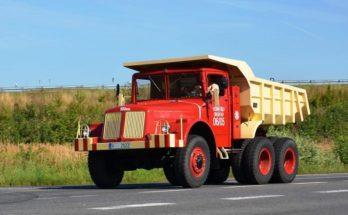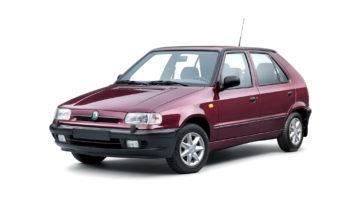The turn of the twenties and thirties of the last century. A variety of models are racing along the roads, which are united by a square body and a front-mounted engine. However, the Kopřivnice innovator Hans Ledwink does n't like that very much, and that's why the team led by him in Tatra starts working on a car that will soon change the image of the automotive world.
The "chosen" model is the Tatra V 570 , which was built using the knowledge of expert Paul Jaray about aerodynamic cars. Moving the engine to the rear of the car and thus also changing the concept to "everything at the back" goes hand in hand with this adapted body type. The first design of the V 570 was presented to Ledwink by the designer Erich Übelacker in 1931, but at that time it was more than an aerodynamic body, the idea itself with an engine in the rear of the car (according to available information, a modified unit from the Tatra 57 was used). It was this one that impressed Ledwinka so much that he continued to employ Übelacker, who had a knife to his throat before submitting the proposal for a revolutionary car, in Tatra. The former boss from Kopřivnica believed that by relocating the power unit, it would be possible to reduce the losses of the drive system, increase the space for passengers and lower the center of gravity of the entire car.
So although the idea was received with enthusiasm, it still had many design flaws. Ledwinka tried to remove these, which he succeeded more or less successfully, and Kopřivničtí could thus produce two initial prototypes . However, the car was still in the development phase, so after the technology came the bodywork. As already mentioned in the introduction, Paul Jaray's knowledge of aerodynamic cars, which he has been working on since the twenties of the last century, was used during its construction. The final form of the V 570 thus received a flowing rear part, which hid the drive train, lights, handles and front fenders embedded in the body and the front window set at an angle of 45 degrees. In addition, the bodywork was also covered from below, which achieved excellent aerodynamics and an unconventional appearance in the Tatra. If we were to look at the concept at that time with today's eyes, we would have to appreciate, among other things, the almost perfectly aerodynamic wheels.
From a technical point of view, the streamlined two-door body is built on a wooden skeleton with a backbone frame, the front part is also solid, in other words, it lacks a lid. The only 3800 mm long Tatra V 570 is powered by a then new, flat, air-cooled two-cylinder with an output of 18 hp at 3800 rpm. The rear wheels are driven via a four-speed gearbox (which, together with the engine, gearbox and swinging semi-axles, formed a single unit), which eliminated the need for a connecting or joint shaft and thus increased the space for a crew of four. As part of the verification tests before possible serial production, in addition to the hatchback, the production of a coupe and a convertible was also intended, the car drove at a speed of up to 80 km/h!
In the end, however, the serial production never took place, even though the V 570 was conceived as a cheap car for the general public . The popularity of the older type T 57 was so great that it would not be worthwhile to introduce a completely different car into production. Nevertheless, Tatrovka later used the knowledge from the development in the construction of the representative models 77 and 87 , respectively the smaller type 97. The prototype itself was sold to a private owner , who used it for the next thirty years and later sold it to the Tatra Museum in Kopřivnice, where it can still be seen today. It should be noted that the transition into private hands was not without certain modifications – the V 570 lost its original wheels during "civilian service" and received a front bumper and turn signals. However, the rest, including the leather roof , fortunately remained intact.
However, there is also a wave of controversy surrounding one of the world's first aerodynamic cars . That's when Ferdinand Porsche used Tatra's ideas rather grudgingly in the development of his Beetle. For example, the Type 32 prototype has a body virtually identical to the V 570, with the addition of a horizontal, air-cooled four-cylinder in the rear, connected to the gearbox and axle in one unit. The final form of the Beetle was presented in 1938 and led to a lawsuit between Tatra Kopřivnice and the KdF factory (nothing changes this fact, not even the historically documented friendship between Ledwinka and Porsche), which ended only in the 1960s thanks to the war. Porsche allegedly admitted to copying some construction and design elements of Ledwink's car.
Source: Tatra, Automobil 3/79, aerotatra.czweb.org, tatraportal.sk, auto.idnes.cz, jalopnik.com, en.wikipedia.org, illustration: V. Zapadlík



